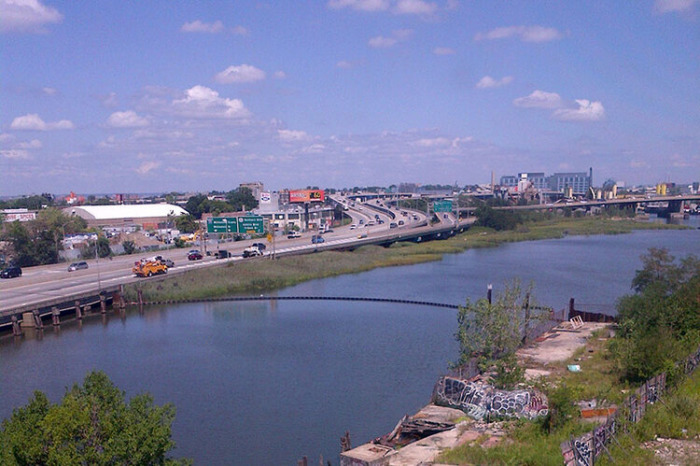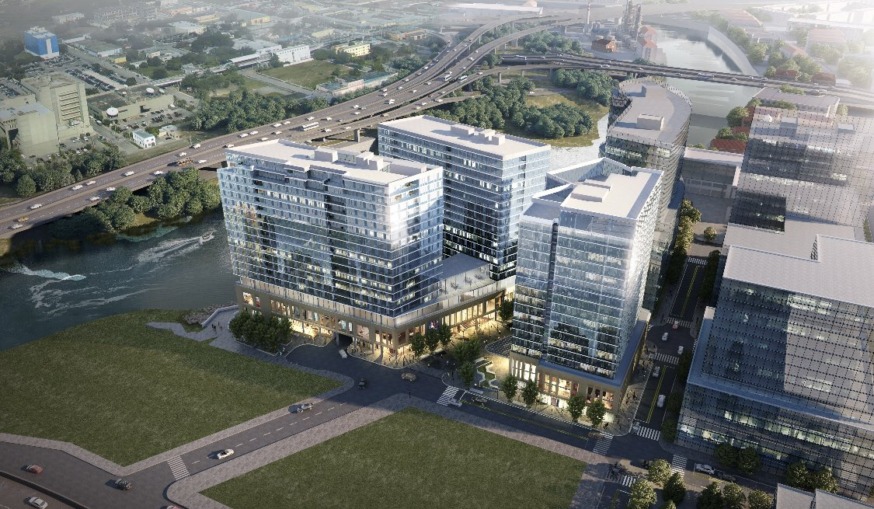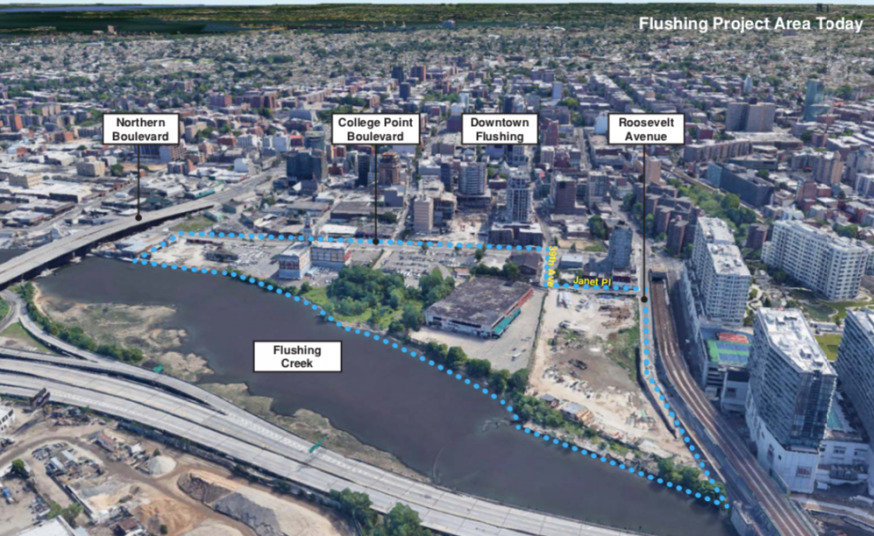
Special Flushing Waterfront District rendering (Courtesy of FWRA)
Dec. 10, 2020 By Allie Griffin
The City Council voted Thursday to approve a land use application for a sprawling 13-tower mixed-use development that will transform the Flushing waterfront for years to come.
The Council voted 39-to-5 — with one abstention — to approve a proposal to create a “Special Flushing Waterfront District” on 29-acres of privately-owned land along the Flushing Creek.
The special district, which represents a series of zoning changes, makes way for 1,725 apartments, 879 hotel rooms, office and retail space, as well as a brand new road network. The plan also includes 75 to 90 affordable housing units, a publicly accessible waterfront promenade and open space.
The full Council voted to approve the application after the applicant — a consortium of three private developers known as FWRA — reached an agreement to hire workers from two influential labor unions, 32BJ Service Employees International Union and the New York Hotel & Motels Trades Council.
Flushing Council Member Peter Koo, who represents the district where the development is planned, said Thursday’s vote was the result of years of discussion and meetings.
“This vote comes after decades of planning and proposals, stops and starts, meetings and hearings,” Koo said, who voted in favor of the development.
He praised the project, saying it would connect downtown Flushing to the waterfront. He said it would also lead to hundreds of well-paying jobs for local residents.
“We have a commitment to an economic shot in the arm for Flushing and the city at time when we need it most,” Koo said.

The Flushing Creek (Photo: Department of City Planning)
However, the project didn’t receive the unanimous support of the Council.
Council Members Costa Constantinides, Jimmy Van Bramer, Carlos Menchaca, Inez Barron and Brad Lander all voted against the application. Council Member Paul Vallone was the one abstention.
Constantinides and Vallone did not explain their votes, but the others voted it down saying that the project lacked enough affordable housing and that it could lead to the displacement of low-income residents.
They said that 75 to 90 units was not enough given the scale of the development. They also noted that while the developer had agreed to discuss adding more affordable units there was no firm commitment.
“I cannot vote for a plan that contains so little affordable housing and contains only an unenforceable promise by the developer to do better by the community within the next three years,” Van Bramer said during the Council meeting.
The developers, however, do meet the city’s affordable housings requirements. The 29 acre project consists of four separate plots and only one parcel needs to be upzoned and is subject to the affordable housing requirement.
Koo said FWRA had agreed to continue talks with the city about adding additional affordable units over the next three years — though he didn’t provide a specific number of units that might come.
FWRA plans to start construction as soon as possible. The project, according to developers, could be completed as soon as 2025.
“After decades of false starts and stops to activate the waterfront, we could not be more honored to be part of the solution,” the developers said in a statement. “Today and together, we move Flushing forward.”

Special Flushing Waterfront District rendering (Courtesy of FWRA)

Department of City Planning
7 Comments

This is a good start, but the economic shot in the arm for NYC will be the widespread availability of the Covid vaccine.
College Point Blvd needs to be narrowed. It’s too dangerous for pedestrians.
Not really opposed to this…
It was a wasteland before, so happy to see development. What do ‘affordable housing units’ really even matter of it requires median income to scrape by with no monthly savings anyways?
Remember all the LIC ‘affordable units’ and the new building at Greenpoint and QB that requires well over $2,000/month for a one bedroom.
All this does is drive up the loan ceiling for when the government eventually decides to subsidize an increasing amount of housing in NYC after the Fed government bails them out of their extreme debt, further adding to the national debt.
Tax cuts by Trump that benefited only corporations and the top 1% added over a trillion dollars to the national debt.
What does that have to do with any of this? I didn’t mention Trump or his tax policies anywhere. Way to dodge the topic at hand…
Thank you developers for demolishing this toxic waste dump and replacing with diverging better to look at.
LIVE BETTER. WORK UNION.
omg, i feel sorry for anyone that lives around that sewage collection pond. i always hold my nose when the 7 train passes by. it smell so bad.